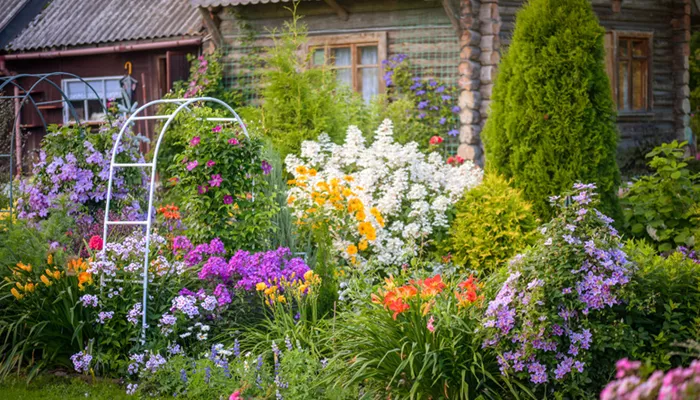As naturalistic garden designs rise in popularity, many gardeners are packing their flower beds full to achieve a lush, wild look. But according to gardening professionals, this trendy planting style may be doing more harm than good.
Although planting a variety of flowers close together may give instant fullness and color, experts say it can actually limit plant growth, reduce air circulation, and create a breeding ground for disease. Here’s what the professionals recommend instead.
1. What Is the Overcrowded Flower Bed Trend?
The appeal of an overcrowded flower bed lies in its vibrant, overgrown appearance. This method involves planting many flowers tightly together, often in raised garden beds or borders, to create a full, abundant look.
The style mimics the natural chaos of wildflower fields, and many gardeners use filler plants to remove any gaps. However, just because this trend looks appealing at first glance doesn’t mean it’s the best option for your plants.
2. Why Experts Advise Against Overplanting
According to Laura Janney, CEO of The Inspired Garden, packing plants too closely can trigger several problems.
“Plants need space to grow their roots and access nutrients,” Janney explains. “When they’re overcrowded, they end up competing for limited resources.”
Soil is a vital source of nutrients, and if too many plants share the same space, each one receives less. This often leads to slower growth and weaker plants. Additionally, some fast-spreading varieties may dominate the bed, pushing out other species and reducing overall biodiversity.
Another concern is poor air circulation. With little room between plants, moisture gets trapped more easily, which increases the risk of fungal infections, mold, and other diseases.
Though an overcrowded flower bed may look beautiful initially, it’s not a sustainable setup. Over time, plants can weaken and lose their visual appeal.
3. How to Avoid Overcrowding in Your Flower Beds
To keep your garden healthy and thriving, plant spacing is key.
Anna Hackman, gardening expert and founder of Green Talk, recommends checking plant tags or seed packets before planting. “These will tell you how much space each plant needs, as well as whether it prefers sun or shade,” she says.
A little upfront research goes a long way. Knowing how tall and wide a plant will grow helps you design a bed with enough breathing room. Although beds may look sparse at first, plants will fill the space as they mature.
“You can use a tape measure to make sure you space your plants properly,” Hackman suggests. She also recommends planting annuals between perennials. “Annuals have shorter roots and create temporary fullness. When they die, they leave room for perennials to expand.”
Another tip? Watch for self-seeding plants. Even annuals can quickly take over if not managed. To prevent this, regularly deadhead fading flowers before they drop seeds.
Pruning is equally important. Keep an eye on plant growth and trim back anything that starts crowding out its neighbors. But prune carefully — poor pruning can stress or damage plants.
4. What to Do If Your Flower Bed Is Already Overcrowded
If your garden is already overfilled, don’t worry — you can still fix it.
“In spring or fall, lift and transplant any plant that’s outgrowing its space,” Janney recommends. Use a hand trowel to gently dig up the plant, taking care not to damage the roots. Then move it to another spot in your yard or pot it in a container.
Once you’ve cleared space, reassess your bed layout. Select plants that are better suited for the space you have. Look for varieties that grow well together and stay within their boundaries.
Hackman notes that while many gardeners love instant results, it’s worth being patient. “When you plan properly, your garden rewards you over time,” she says.
The same principles apply to cut flower gardens, where even short-lived annuals need proper spacing to flourish.
FAQs
Q: What problems can an overcrowded flower bed cause?
A: Overcrowding leads to competition for nutrients, limited root space, poor air circulation, and a higher risk of disease. Plants may grow slower and appear unhealthy over time.
Q: How do I fix an overcrowded garden bed?
A: Transplant some of the larger or more aggressive plants during the spring or fall. Thin out the bed to allow remaining plants more space to grow.
Q: Is it okay to plant flowers close together for a fuller look?
A: While it may look better short-term, it’s best to follow proper spacing guidelines. You can still create a full look using annuals or filler plants that won’t crowd perennials.
In Summary
Overcrowded flower beds might seem like an easy way to create a thriving garden, but experts say this approach often leads to more trouble than beauty. By choosing the right plants, spacing them carefully, and staying on top of pruning, you can create a healthy, stunning garden that flourishes long-term — no overplanting needed.


